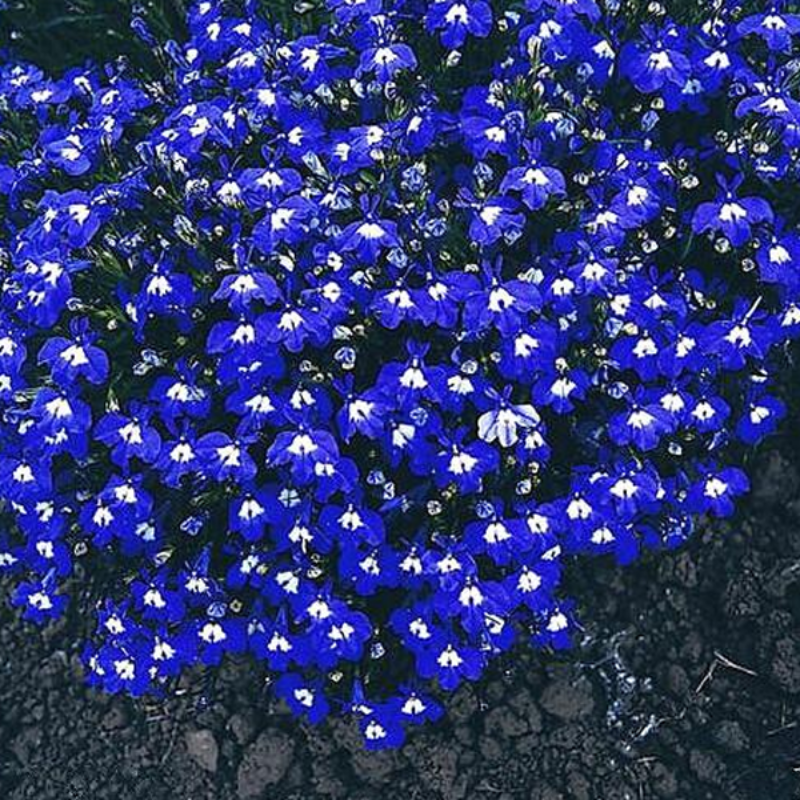- Species and varieties: Lobelia erinus, commonly known as blue lobelia, is a species of flowering plant in the bellflower family Campanulaceae. It is native to southern Africa and is widely cultivated for its attractive blue flowers. Varieties include 'Crystal Palace', 'Cambridge Blue', and 'Sapphire'.
- Hybrid or heirloom: Blue lobelia flower seeds are typically heirloom varieties, meaning they are open-pollinated and have been passed down through generations without genetic modification. Some hybrid varieties may also be available, offering specific traits such as improved disease resistance or unique flower colors.
- Pruning and training: Regular deadheading of spent flowers will encourage continuous blooming throughout the growing season. Pinching back the stems can promote bushier growth and prevent the plant from becoming leggy.
- Fertilization needs: Blue lobelia benefits from regular feeding with a balanced, water-soluble fertilizer. Apply fertilizer every 2-4 weeks during the growing season to support vigorous growth and flowering. Avoid over-fertilizing, as this can lead to excessive foliage growth at the expense of flowers.
- Hardiness zones: Blue lobelia is suitable for USDA hardiness zones 10-11. In cooler climates, it is often grown as an annual.
- Climate requirements: Blue lobelia thrives in cool, moist environments. It prefers partial shade to full sun and well-drained soil. It is important to keep the soil consistently moist, especially during hot weather, to ensure healthy growth and abundant flowering.




